Cisco CCNP ROUTE -Updates and Prefixes
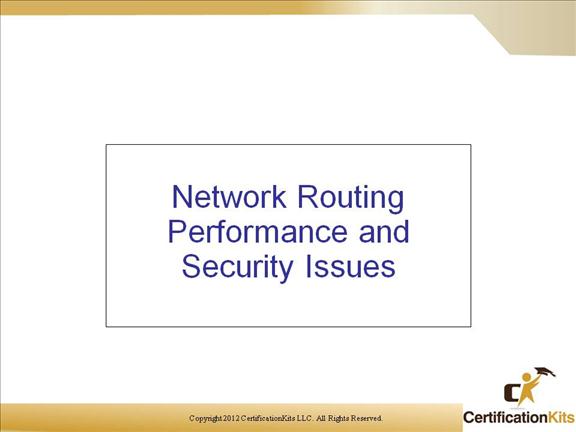
Cisco CCNP ROUTE Common Factors Affecting Network Performance
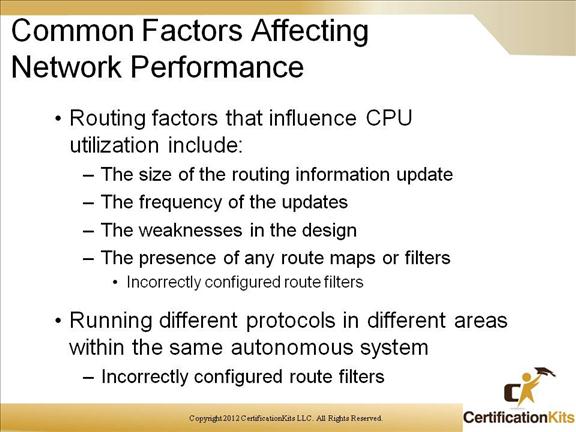
OSPF is a very CPU intensive routing protocol. OSPF design is crucial in helping to keep CPU utilization down (e.g. wise use of IP Address summarization and OSPF areas.
CPU utilization spikes when processing updates. Factors include:
- • Size of routing table
- • Frequency of updates
- • Presence of any route filters
- • Number of routing protocol processes
- • Weakness in design
Cisco CCNP ROUTE Routing Updates
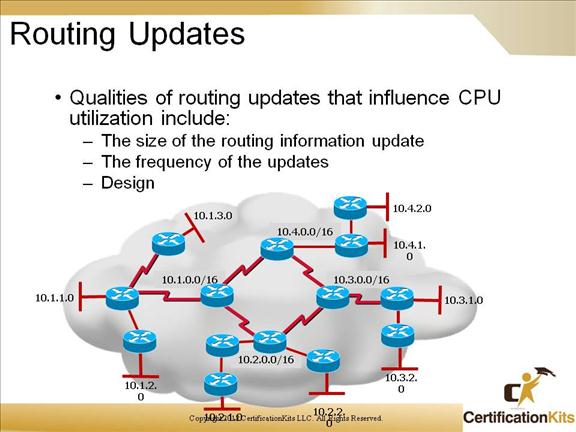
Again, use of IP address summarization along with wise use of OSPF areas can influence CPU utilization. In some network deployments high CPU utilization is normal. In general a large network will be more CPU intensive than a small network. As such, the more devices and links that are inside an OSPF area, the more routing update traffic there will be.
Cisco CCNP ROUTE Filtering Routing Updates
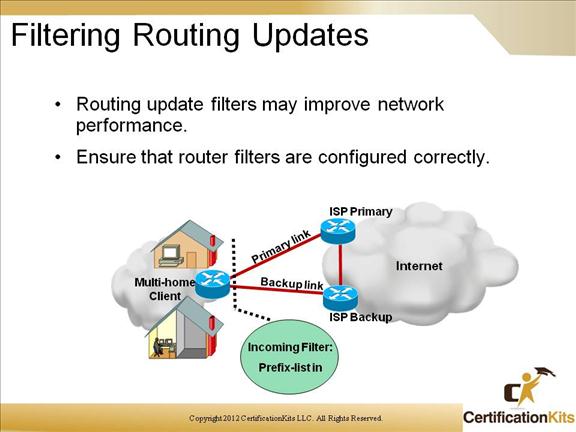
Route filters can be used to influence routing and can improve network performance. Route filtering influences routes that either enter into or are advertised out of a router. In OSPF, which is a link state routing protocol, routes are based on what is in the link-state database (LSDB).
If filters are not configured correctly it can result in poor performance or incorrect routes being advertised and/or received.
Cisco CCNP ROUTE Running Multiple Routing Protocols
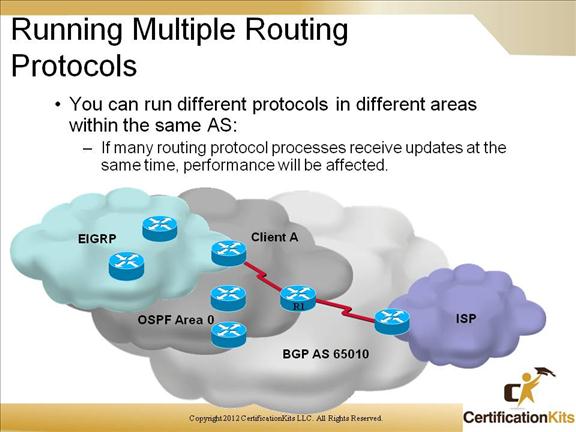
You can run different routing protocols in different parts of a network. Route redistribution can be utilized to exchange routes. When exchanging routes between routing protocols it is important to redistribute with appropriate metrics for the routing protocol involved.
Cisco CCNP ROUTE Controlling Routing Updates
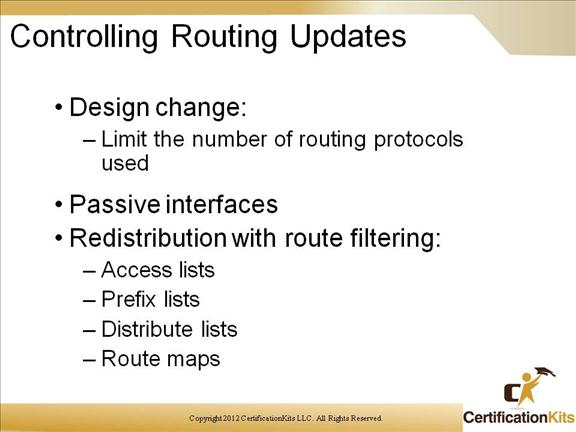
There are multiple ways to control routing updates. Examples are the use of passive interfaces as well as the use of access lists, prefix lists or distribute lists when redistributing routes between routing protocols.
Controlling routing updates must be performed in a controlled way taking into account recommended design rules.
Passive interfaces prevent routing updates from being advertised out a specific interface.
You can also block advertisements of specific routes utilizing things such as:
- • Access lists
- • Prefix lists
- • Distribute lists
- • Route maps
Cisco CCNP ROUTE Using Route Filters
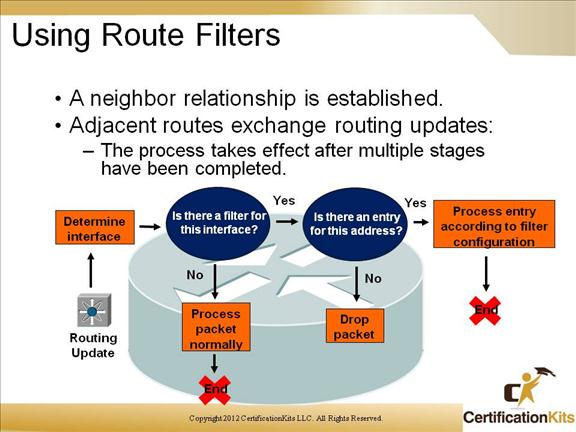
Route filters can be used when exchanging routing updates to with accept or deny the update.
Steps are as follows:
- • Routing update arrives at the receiving router. Router stores the packet and enacts the CPU to make a routing decision.
- • The router checks to see if there is an incoming filter applied to the interface.
- • The router checks if there is an entry for this address in the routing update table. If no entry exists, the route is dropped. If the entry exists, the next step is taken.
- • The router CPU processes the routing update packet according to any filers applied.
Cisco CCNP ROUTE Distribute Lists
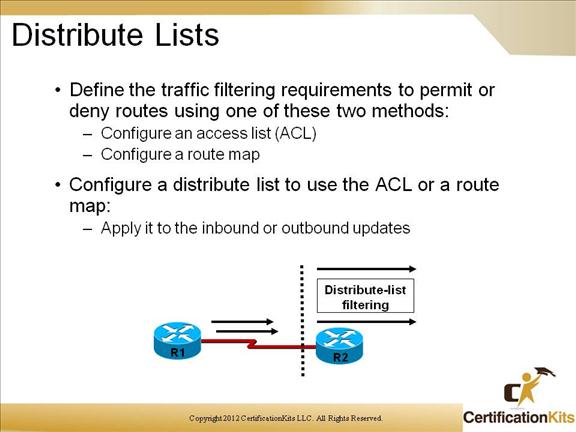
Distribute Lists are an easy way to define traffic filtering requirements to either permit or deny routes. Distribute lists utilize ACLs.
Cisco CCNP ROUTE Configure a Distribute List
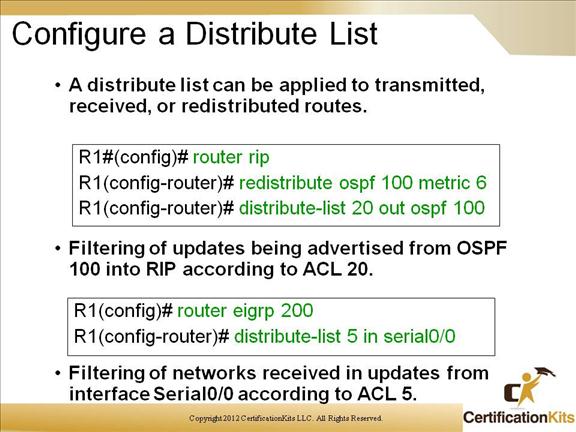
The above slide shows an example as well as syntax of using the distribute-list command within a specific router configuration mode. You can filter routing update traffic for any protocol by defining an access list and applying it to the specific routing protocol.
Cisco CCNP ROUTE IP Prefix Filters
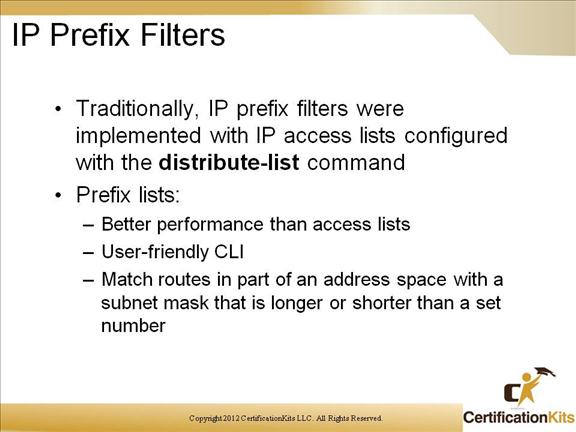
Prefix lists are better than the traditional distribute-lists are they are more efficient. Distribute lists have several drawbacks as follows:
- • The subnet mask cannot be easily matched
- • Access lists are evaluated sequentially looking at every IP Prefix in the IP routing table
- • Extended access lists can be complicated to configure
Cisco CCNP ROUTE IP Prefix Filters
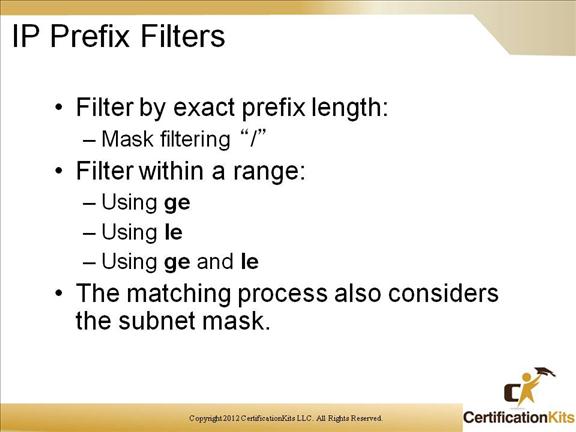
IP prefix lists are configured to filter traffic based on an exact match of a prefix length or a match based on a range when the ge or le keywords are used.
Cisco CCNP ROUTE Prefix List Matching Without ge or le
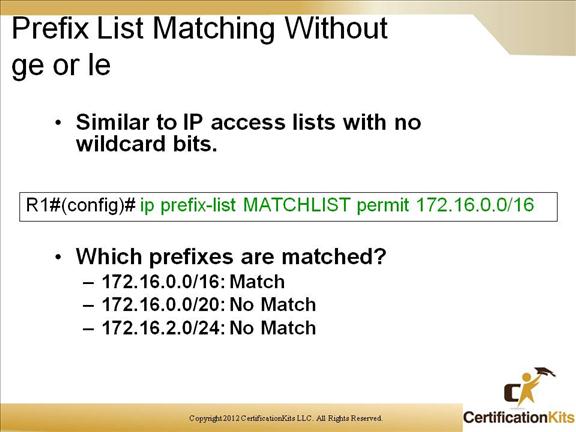
Prefix List Matching is similar to ACLs but simpler to implement. IP prefix lists are created in global configuration mode using the ip prefix-list command.
Cisco CCNP ROUTE Prefix List Matching With ge or le
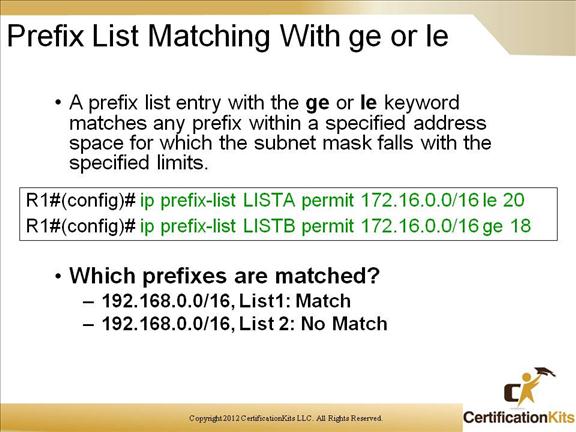
IP Prefix List Matching utilized the less than (le) or greater than (ge) qualifier rather than a wildcard mask.
The first example called LISTA, the route 172.16.0.0/24 is not matched by the prefix list entry even though the IP Address falls within the specified range. Reason it is not match is because the subnet mask is too long.
The second example called LISTB, the route 172.16.0.0/16 is not matched because the subnet mask is too short.
Cisco CCNP ROUTE Configuring Prefix List Examples
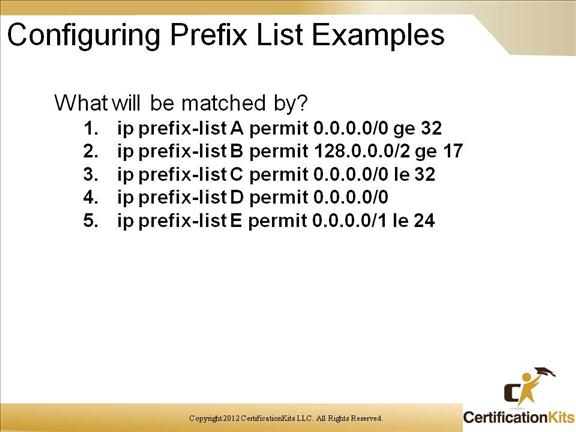
Answers on next page.
Cisco CCNP ROUTE Configuring Prefix List Examples
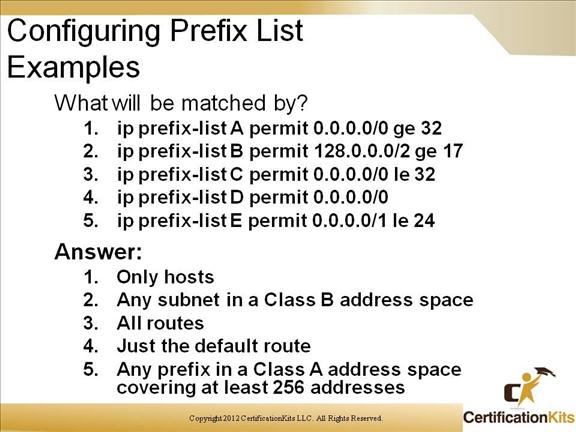
Answers above.
